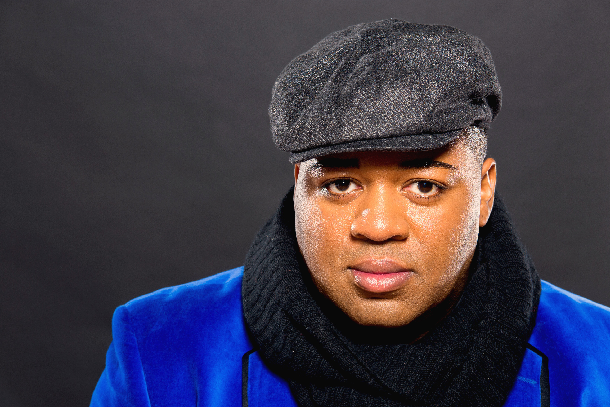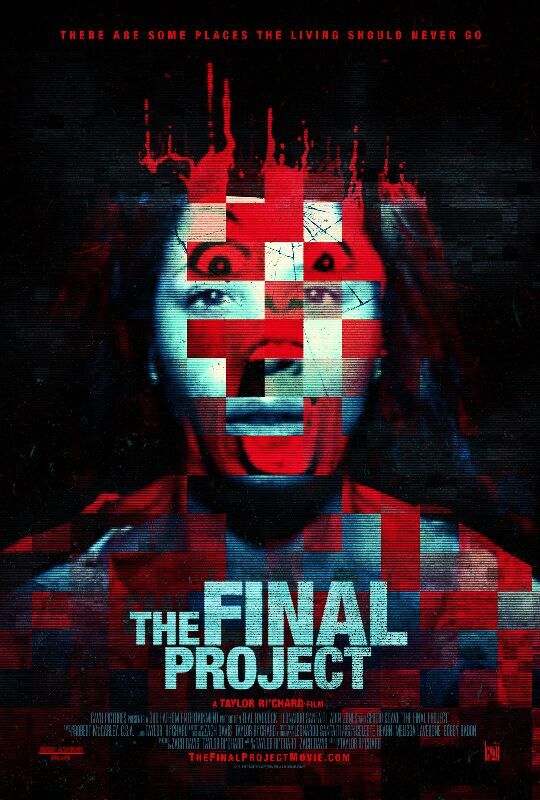People’s deepest fears often come to life as they desperately seek the horrifying truth and secrets of their harrowing environment and circumstances. Indie filmmaker Taylor Ri’chard enthralling proved that the most frightening and dangerous superstitions truly can come to life in his feature film writing, directorial, producing and visual effects debut, the horror movie ‘The Final Project.’ The protagonists in the thriller determinedly set out to capture every moment of their great adventure as they explore the local folklore at a historic Louisiana plantation that time has forgotten. But in the process, they horrifyingly discover that the dead are awake, and there are some places the living should never go.
‘The Final Project‘ was made by 3rd Fathom Entertainment, and will be be distributed into theaters by CAVU Pictures. The latter company will release the thriller into theaters in Atlanta and Houston on Friday. The film will then expand to theaters in New York and Los Angeles on March 4, before being distributed nationwide. The horror movie, which Ri’chard penned with Zachary Davis, stars Amber Erwin, Teal Haddock, Arin Jones, Evan McLean, Leonardo Santaiti and Sergio Suave.
‘The Final Project’ follows six college students have organized the ultimate graduation project-a documentary film about one of the most notorious haunted houses in America, the Lafitte Plantation in Vacherie, Louisiana. A Civil War landmark with a dark past, complete with stories of mutilated soldiers, murdered families and restless shadows roaming its abandoned corridors. No one has entered Lafitte in years-until now. Outfitted with high-tech recording equipment in order to capture every moment of their great adventure, the intrepid young filmmakers bravely venture deep into the misty backwoods of Louisiana. But on this plantation that time has forgotten, something evil still waits and watches. When darkness falls, their deepest fears come to life, as one by one they’ll learn the horrifying truth that awaits all who dare seek the secrets of the Lafitte Plantation.
The horror thriller utilized real locations in and around Georgia, as well as a crew and ensemble of dedicated locals who are well acquainted with the haunted history of the South. Combining the found footage genre with authentic local folklore, it updates the classic American ghost story by tapping into a history too chillingly real to deny.
The backstory of ‘The Final Project’ combines an Old Hollywood touch with a real-life twist. Chretien Point Plantation in Sunset, Louisiana, the real-life model for the film’s Lafitte Plantation, was also the inspiration for the interior of the legendary Tara from ‘Gone with the Wind.’ Its true claim to fame, however, lies closer to home. The site of a pitched and bloody battle between Union and Confederate soldiers at the height of the Civil War, with a bullet hole still embedded in one of its front doors, Chretien Point has long been rumored to be one of the biggest supernatural hotspots in North America. Ghostly sightings have been reported for decades, with stories of buried treasure, a vengeful house mistress, and even a nearby haunted bridge.
Ri’chard generously took the time recently to talk about making his feature film writing, directing, producing and visual effects debuts on ‘The Final Project’ during an exclusive interview. Among other things, the filmmaker discussed that when he was deciding to write the script for the film, he knew he wanted the plot be inspired by the stories he heard as a child about the ghosts and hauntings at the Chretien Pointe Plantation in Sunset, Louisiana. The helmer also mentioned that he decided to hire up-and-coming actors who naturally behaved like the characters he had written with Davis, and who ultimately had organic chemistry with each other that could authentically transfer to the screen.
ShockYa (SY): You co-wrote the script for the upcoming horror thriller, ‘The Final Project,’ with Zachary Davis. What was the inspiration for you both to write the story? What was your collaboration process like as you worked on the screenplay together?
Taylor Ri’chard (TR): The story was inspired by the folklore of Chretien Pointe Plantation in Sunset, Louisiana. As a child I always heard stories about ghosts and hauntings being present at the plantation. So as I began my journey in deciding the type of horror film I wanted to make, this story was the thing that inspired me the most.
As far as the collaboration with Zach, we did a lot of the writing face to face. We went back and forth with story development, and how we wanted our characters to react on script.
SY: Besides working on the script for the film, you also served as the director. Was it always your intention to direct the movie as you were writing it? How did working on the screenplay influence your directorial duties once you began filming?
TR: It was definitely always my intention to direct this film. I like to consider myself an artist. I believe in creating my own content and then directing it. I’m heavily influenced by film artists like Quentin Tarantino. For me, as I develop the script, I am always creating the vision of how I want to direct it. So my directorial duties really do go hand in hand throughout the entire creative process.
SY: ‘The Final Project’s main characters, the six college students, decide to make a documentary about one of the most notorious haunted houses in America, the Lafitte Plantation in Vacherie, Louisiana, which is a Civil War landmark. Since you filmed the thriller in real locations in and around Georgia, what was the process of finding, and ultimately filming in, authentic places that represent the plantation?
TR: Authenticity was very important, especially since I wanted to create a stripped down, raw found footage movie. We spent a lot of time, close to six months, visiting all the plantations in the south until we found the one that worked the best. That was the most important element to this movie, because the house is like the unspoken main character in the film.
SY: What was the casting process like, particularly for the six college students, like for ‘The Final Project?’
TR: We cast the film in Atlanta, and we looked for actors that were still in the beginning of their careers. We wanted actors that “naturally” behaved like the characters we had written. So the people who walked in and started telling us about themselves had actually started auditioning for the movie before they ever recited a line.
SY: Once the actors were cast in the horror thriller, were you able to have any rehearsal time with them, in order to build their characters’ relationships and backstories?
TR: Yes, we did a month of building relationships. It was very important that the characters had an organic chemistry that would hopefully transfer on-screen. I think we see that chemistry really well in the movie as they drive up to the plantation.
SY: Since the college students in ‘The Final Project’ decide to make a documentary about the Lafitte Plantation, and the film has elements of the found footage subgenre, what was your process of working on the cinematography to obtain the camera shots you wanted?
TR: We followed the normal rules of the “found footage” genre; shaky cam, hand held etc. What we did differently was added the POV (point-of-view) head cam shots. I wanted to create an effect similar to the interactive experience you get when you play video games like Halo and Call of Duty.
SY: Since the movie is driven by its horror and thriller scares as the students are filming their documentary at the plantation, what was the process of creating the visual effects, particularly the action sequences and stunts?
TR: Since we wanted a raw feel to the film, a lot of the visual effects were very old school. I can’t say much more without giving it all away.
SY: Besides co-writing, directing and working on the visual effects for the movie, you also edited it. How did being so involved in the pre-production and the filming on the set influence the way you edited ‘The Final Project?’
TR: I oversaw the editing process, but I worked with an amazing editor named Richard Robinson who really helped to carve out the final look of the film. Being so involved with the film made it hard sometimes to leave certain things off the cutting room floor, so having someone like Richard guide the process helped me to detach from the project enough to allow its potential to shine through.
SY: You also served as one of the executive producers on the horror thriller. How did also serving as a producer influence your other duties while you were filming the movie, particularly as the director?
TR: Well, in serving as one of the producers, managing the financial process was my primary concern. So as a director, I often had to pull myself back when creating certain visuals that wasn’t necessarily conducive to the budget.
SY: Since ‘The Final Project’ marks your feature film writing, directorial, visual effects, editing and producing debts, are there any lessons you learned as a filmmaker that you’ll bring with you to your next projects?
TR: The main thing that I learned is that it is important to create what I feel best represents my vision. I want to make movies that I enjoy working on, and if people like what I did, then that is an added bonus.
Watch the theatrical trailer, and check out the theatrical poster, for ‘The Final Project’ below.

Written by: Karen Benardello

